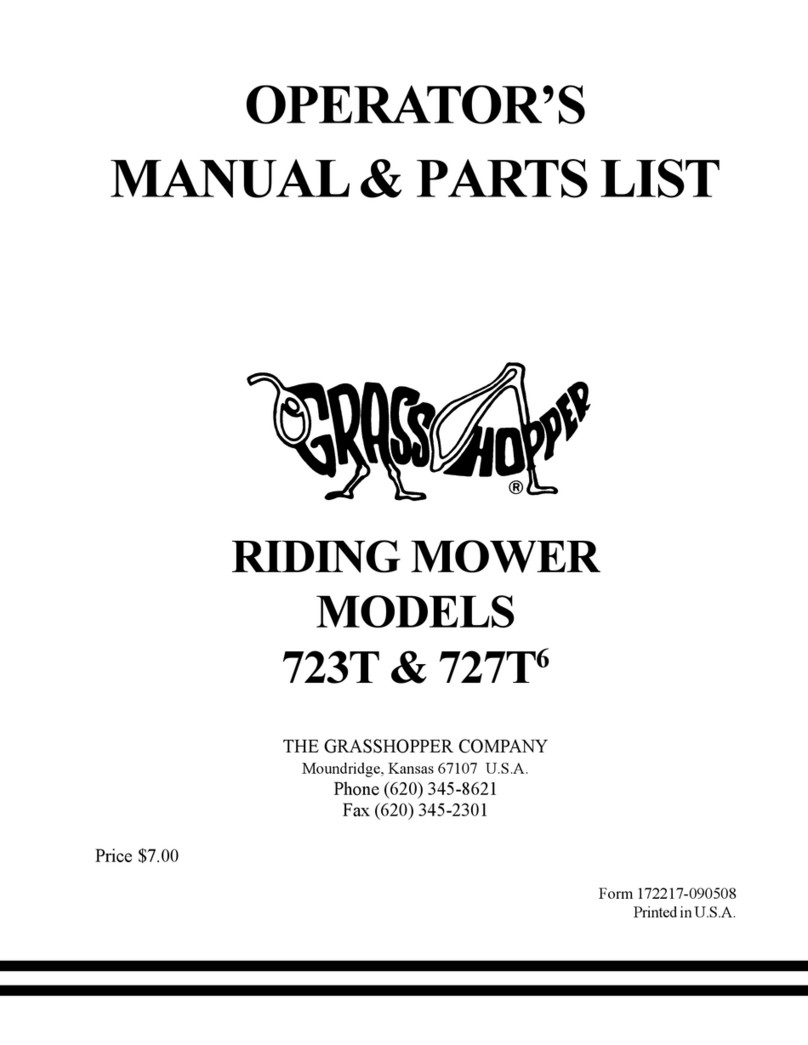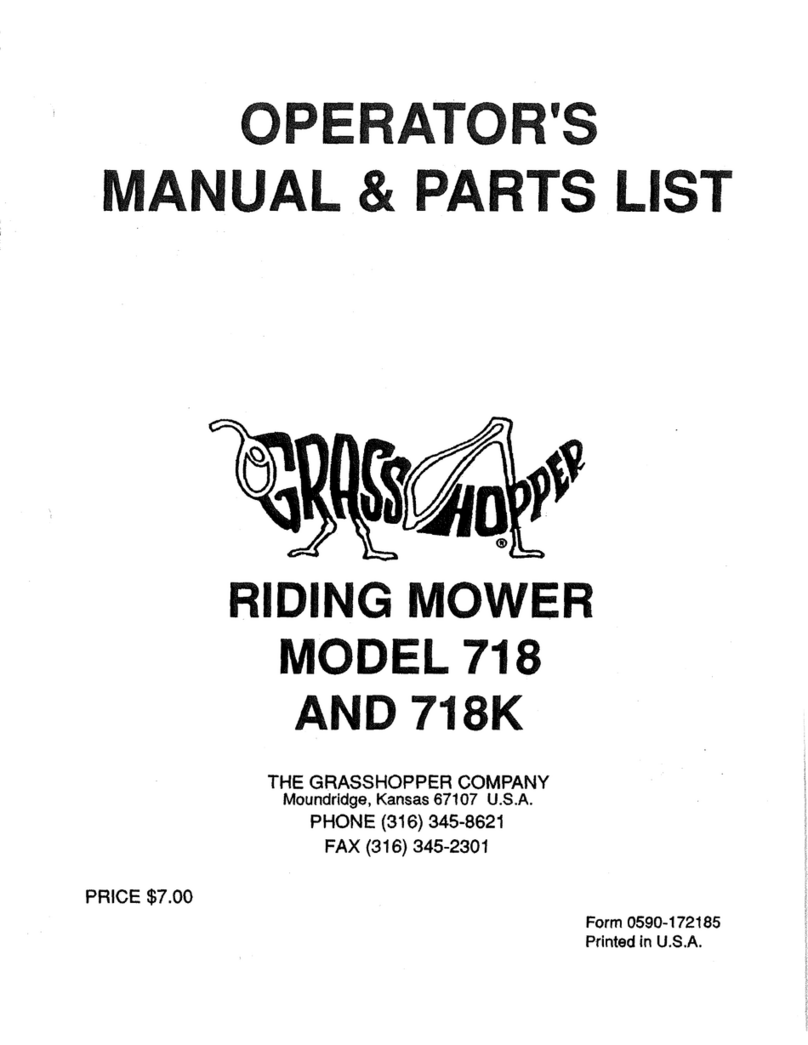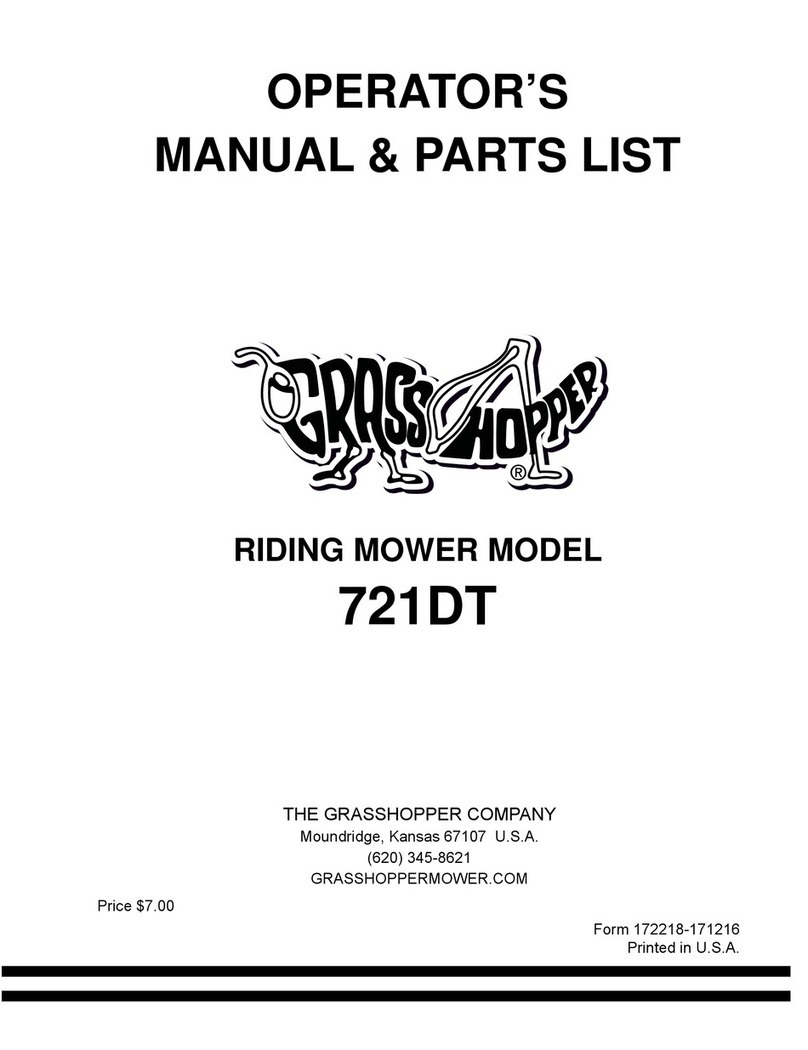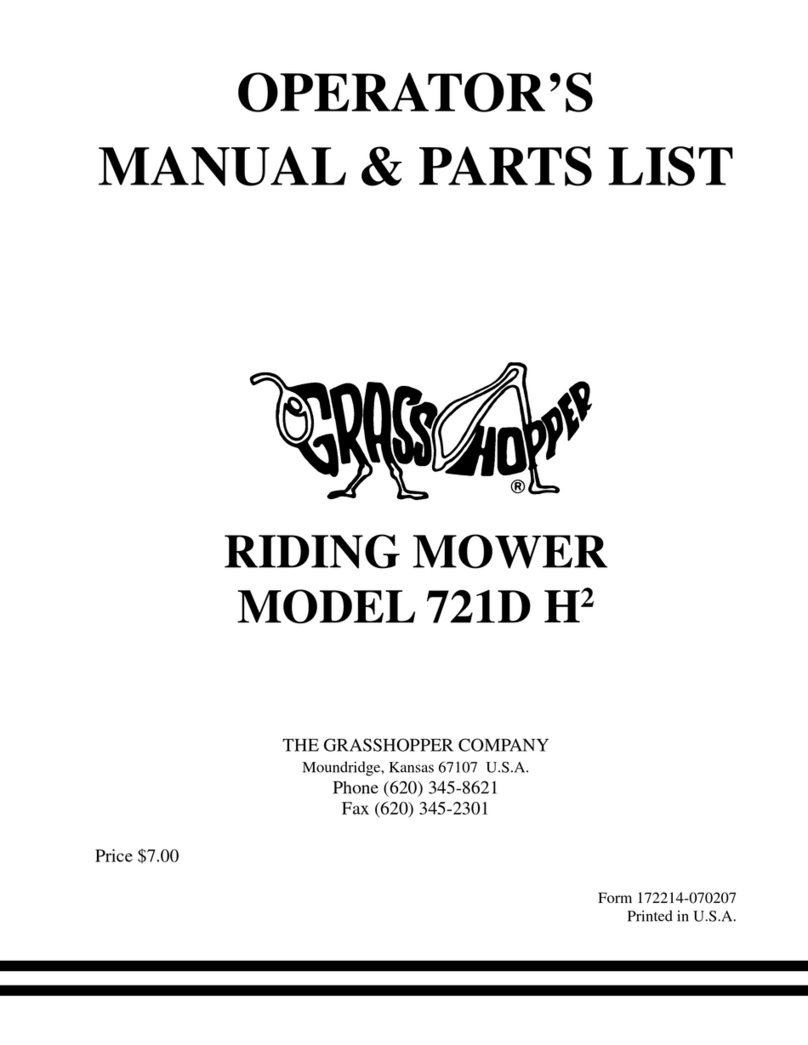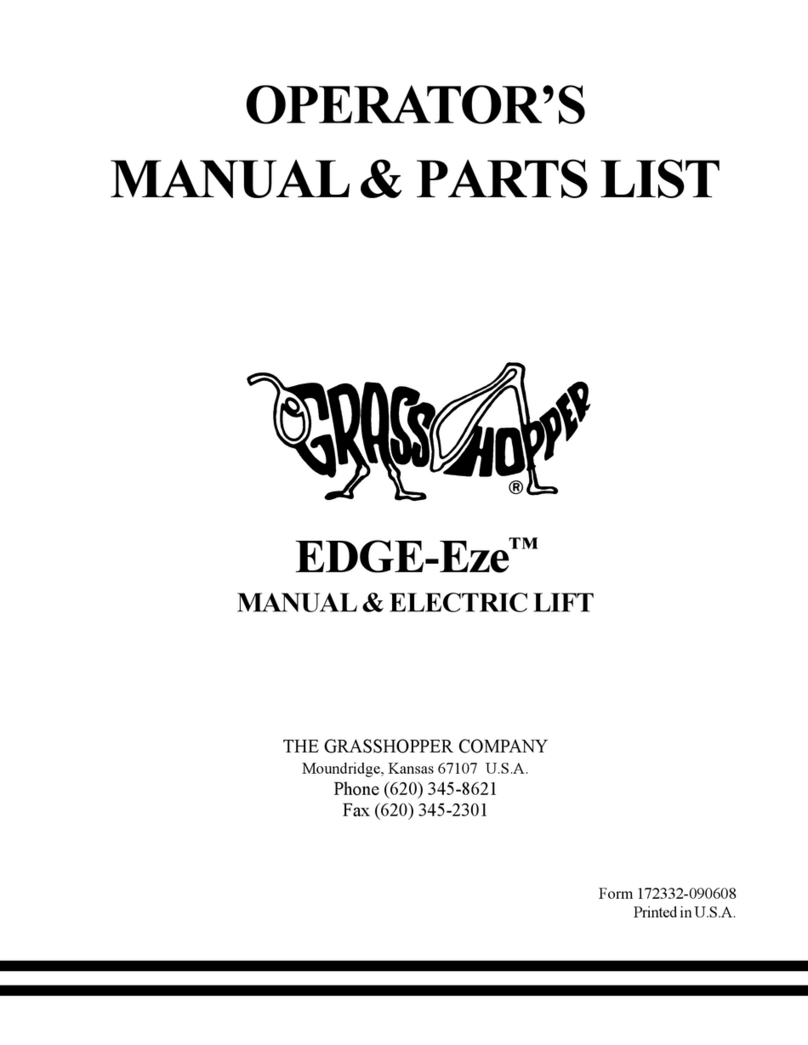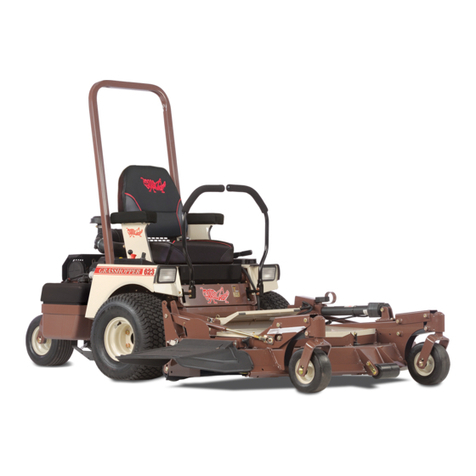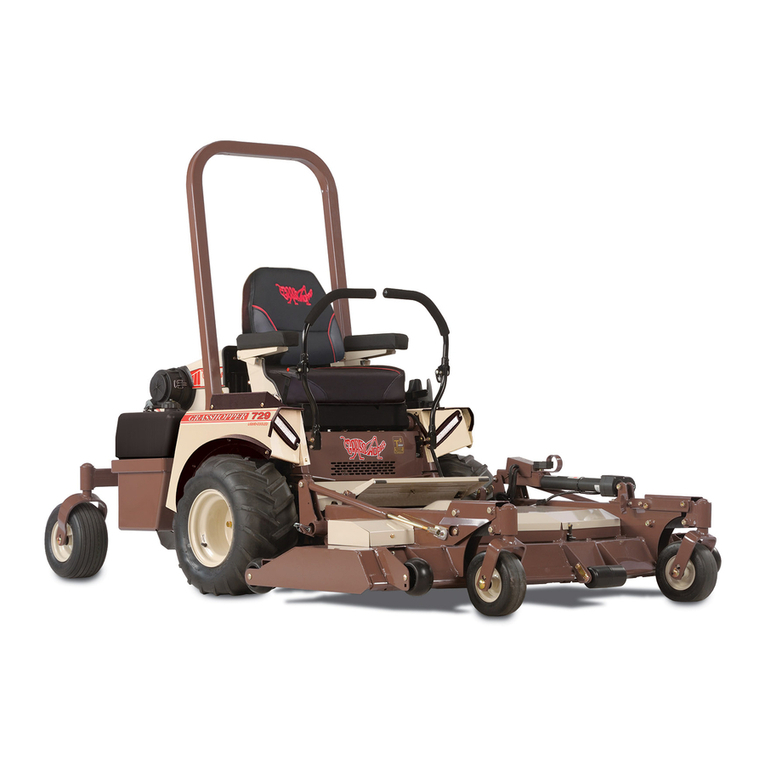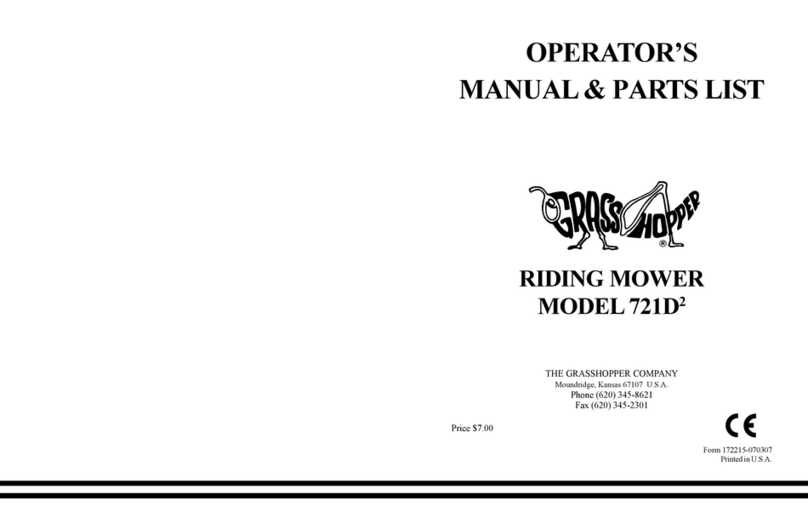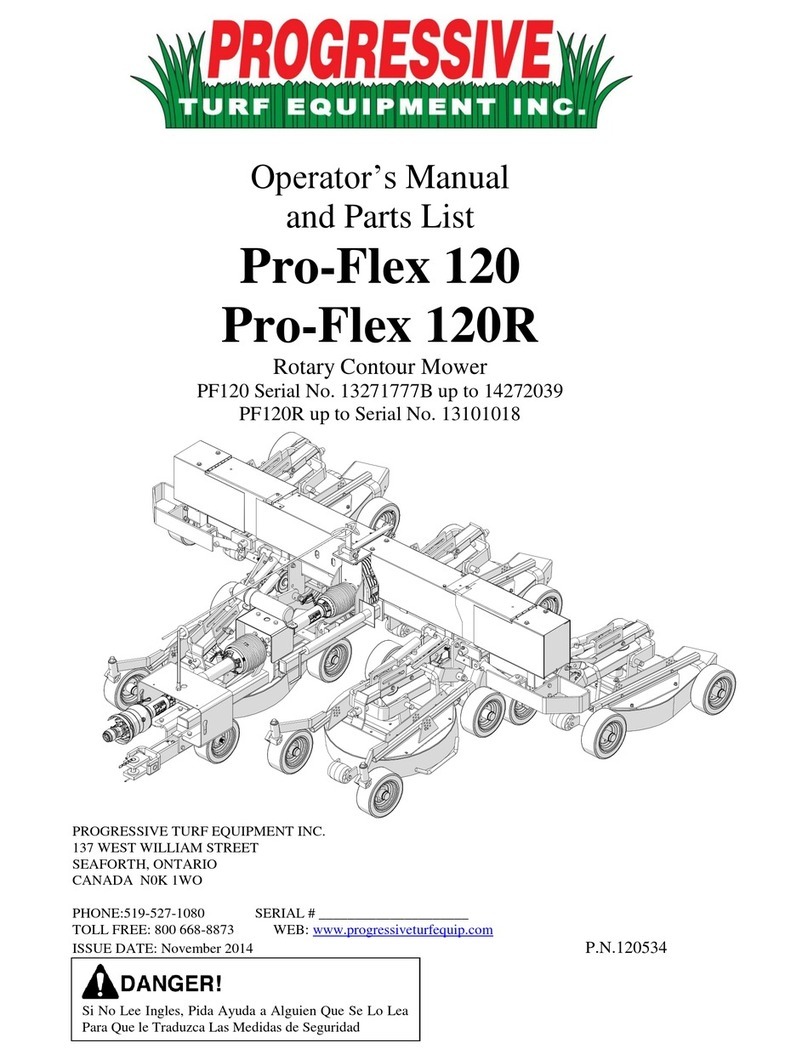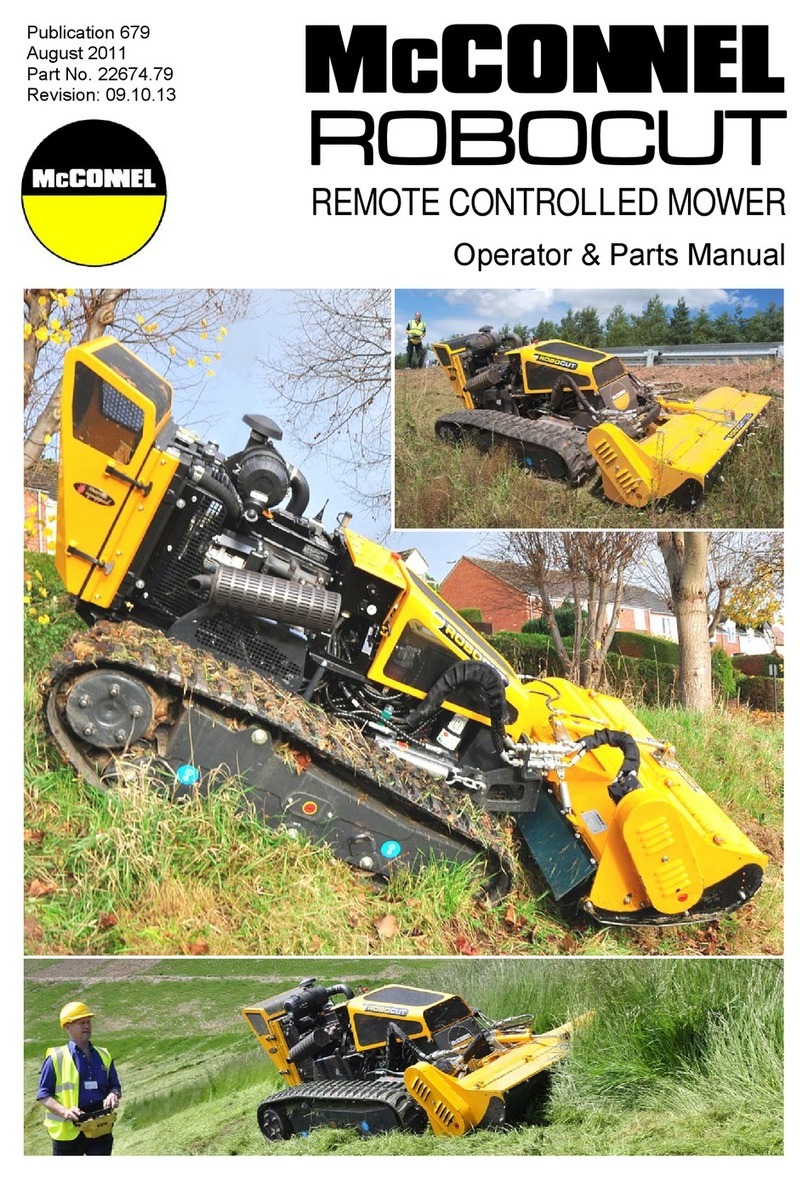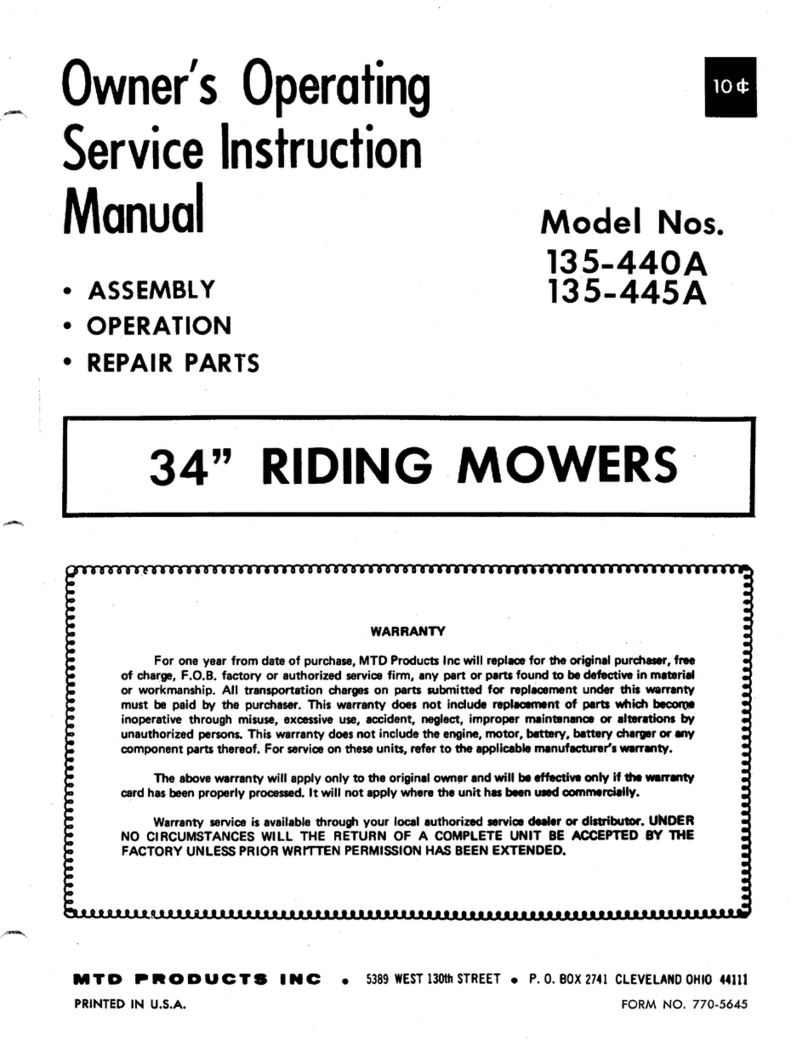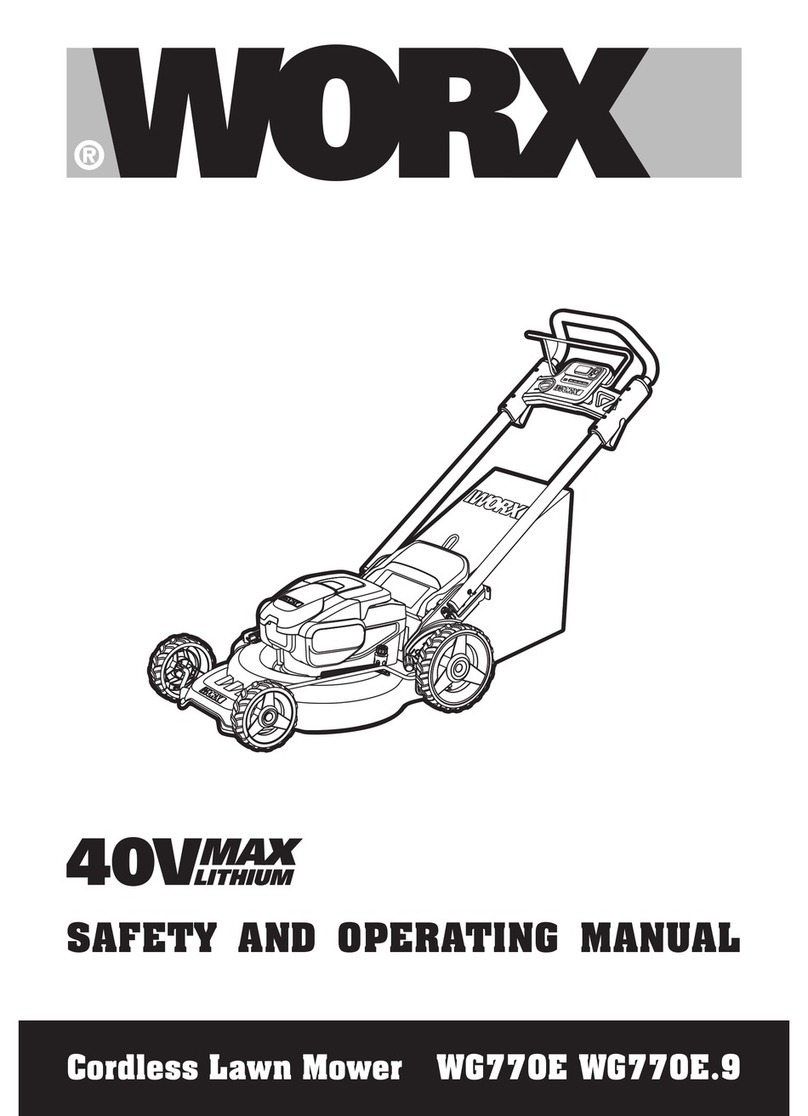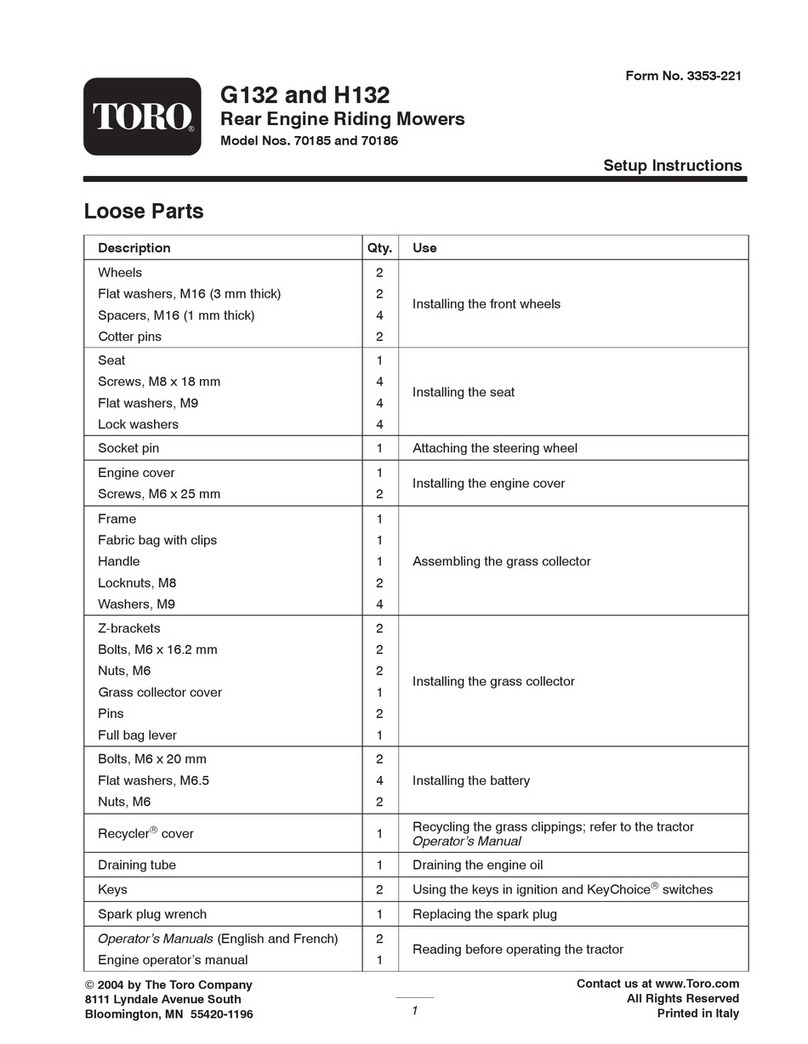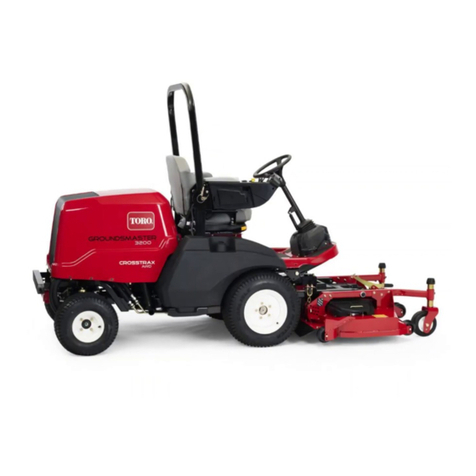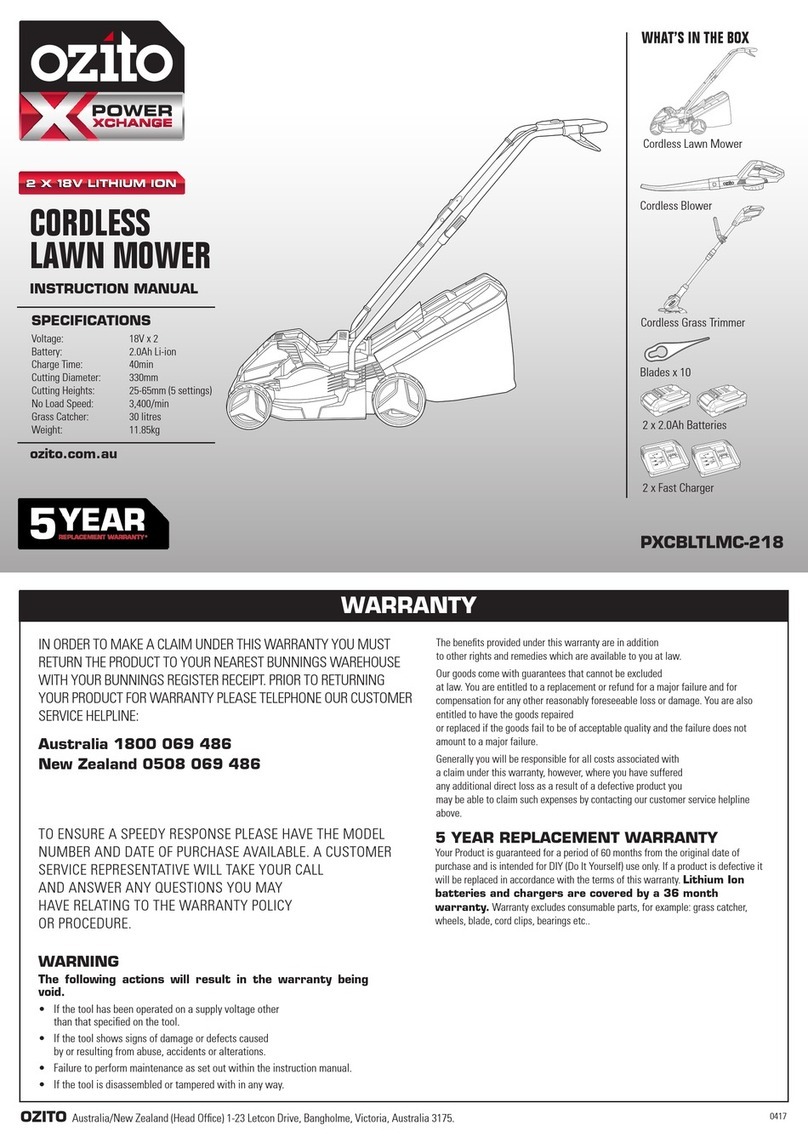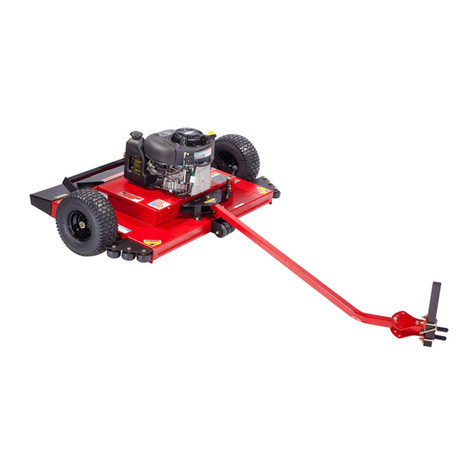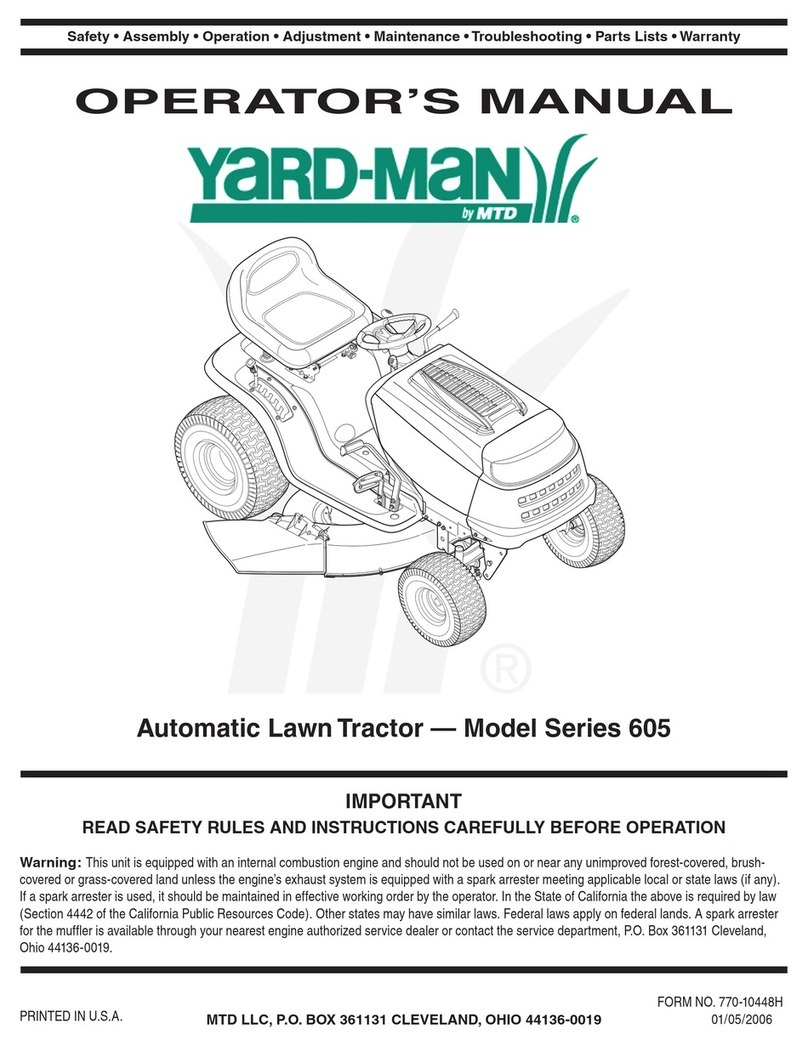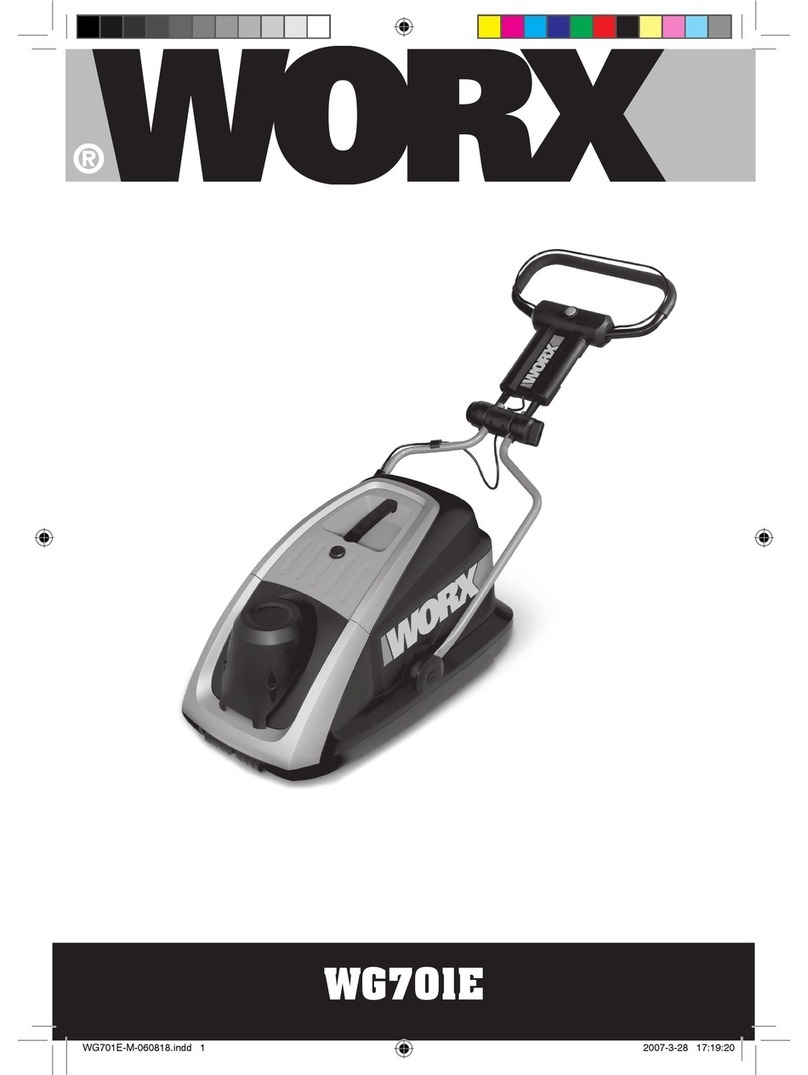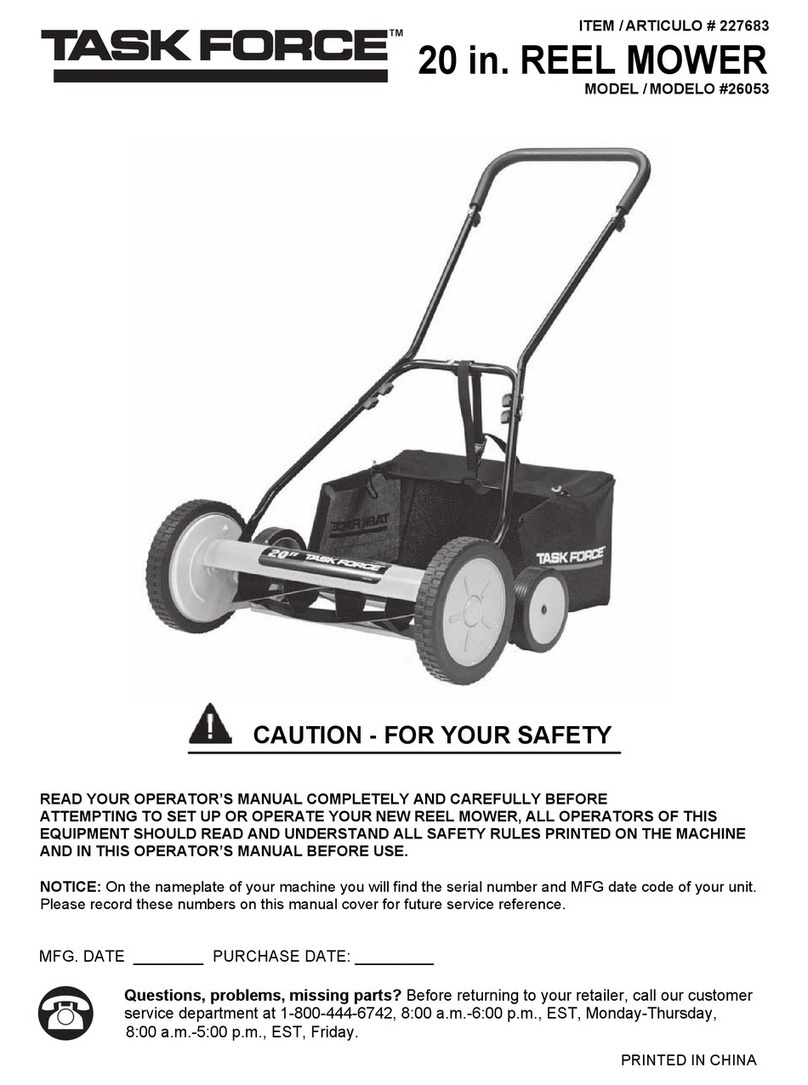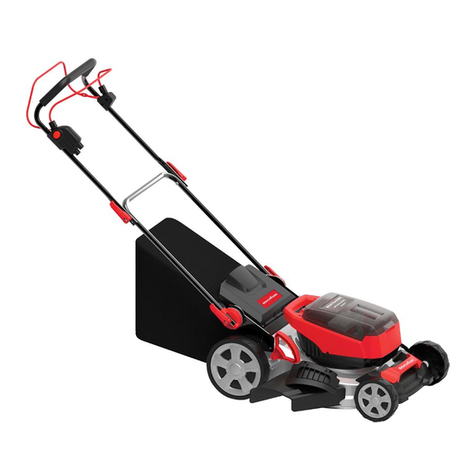
13
away from your vehicle before filling.
• Do not fill fuel containers inside a vehicle
or on a truck or trailer bed because interior
carpets or plastic truck bed liners
may insulate the container and slow the loss
of any static charge.
• When practical, remove equipment from the
truck or trailer and refuel the equipment with
its wheels on the ground.
• If this is not possible, then refuel such equip-
ment on a truck or trailer from a portable
container, rather than from a fuel dispenser
nozzle.
• Keep the dispenser nozzle in contact with
the rim of the fuel tank or portable container
opening at all times until fueling is com-
plete.
• Never use cellular phones or other portable
electronic devices when handling fuel.
OPERATIONAL SAFETY
• Read “Operation” section of this manual be-
fore attempting to operate this unit.
• This machine is equipped with an Operator
Protective Structure (OPS) and a seat belt.
Do not operate this machine without the
OPS installed and in good condition.
• Always wear the seatbelt.
• Do not operate on slopes greater than 15
degrees (27%).
• To determine the angle of a slope, an angle
measuring device (inclinometer) is readily
available at your local hardware store.
• Fenders serve as shields. Do not operate
without them.
• DO NOT drive machine without mower
deck installed. The proper stability of the
machine depends on the weight of the mow-
er deck.
• Keep bystanders away from equipment
while it is in operation.
• Keep children and pets a safe distance away.
Never direct discharge toward anyone.
• Start engine from operator’s seat after disen-
gaging PTO and placing steering levers into
the swing-out (neutral lock) position.
• Keep hands and feet away from underneath
mower deck while engine is running. Stay
clear of all moving parts on machine.
• Wear suitable hearing protection when oper-
ating this machine.
• Do not operate in reverse unless absolutely
necessary and then only after careful obser-
vation of the entire area behind you.
• If operator must dismount to make adjust-
ments the engine must not be running.
• Do not move steering levers from forward to
reverse or reverse to forward position rapidly.
The sudden direction change could cause loss
of control, especially on slopes.
• Reduce speed on slopes and sharp turns to min-
imize tipping and avoid loss of control.
• The operator is responsible for safe operation
on slopes, even slopes of 15 degrees (27%) or
less. Only the operator can determine the sta-
bility of the mower on a given slope based on
existing conditions like: machine speed and di-
rection, slope variation, slipperiness, drop-offs,
holes, obstacles, etc.
• Stay alert for holes, rocks, roots and other hid-
den hazards in the terrain. Keep away from
drop-offs and soft embankments.
• Stop machine and mower deck immediately
upon striking an obstruction. Turn engine off,
inspect machine and mower deck. Repair any
damage before resuming operation.
• Disengage PTO, stop engine, set park brake,
remove key and wait for all movement to stop
before dismounting, making adjustments,
cleaning, or unclogging the machine.
• Never transport mower with blades running.
Disengage PTO before crossing streets, side-
walks, driveways, etc.
• Watch for traffic when operating near or cross-
ing roadways.
• This machine is not equipped for highway use,
especially when safety lighting and marking is
required. It is not a recreational vehicle.
• This unit is not equipped with a drawbar. Do
not pull loads.
• Take all possible precautions when leaving
machine unattended: disengage PTO, lower
mower deck, place steering levers in neutral,
set parking brake, stop engine and remove key
from ignition.
• Never carry passengers.




















